Recently updated on February 12th, 2025 at 02:58 pm
Rock formations have perplexed, inspired, and stoked the curiosities of people for millennia. We can’t deny that man-made attractions like Stonehenge and the Pyramids of Giza are impressive, but what’s more mind boggling is how natural processes form extraordinary sites such as the canyons of Arizona and the fairy chimneys of Turkey. We dive into 12 of the most wonderful and weird rock formations around the world, from the Pinnacles in Australia to the Giant’s Causeway in Northern Ireland.
1. Uluru, Uluru-Kata Tjuta National Park, Australia
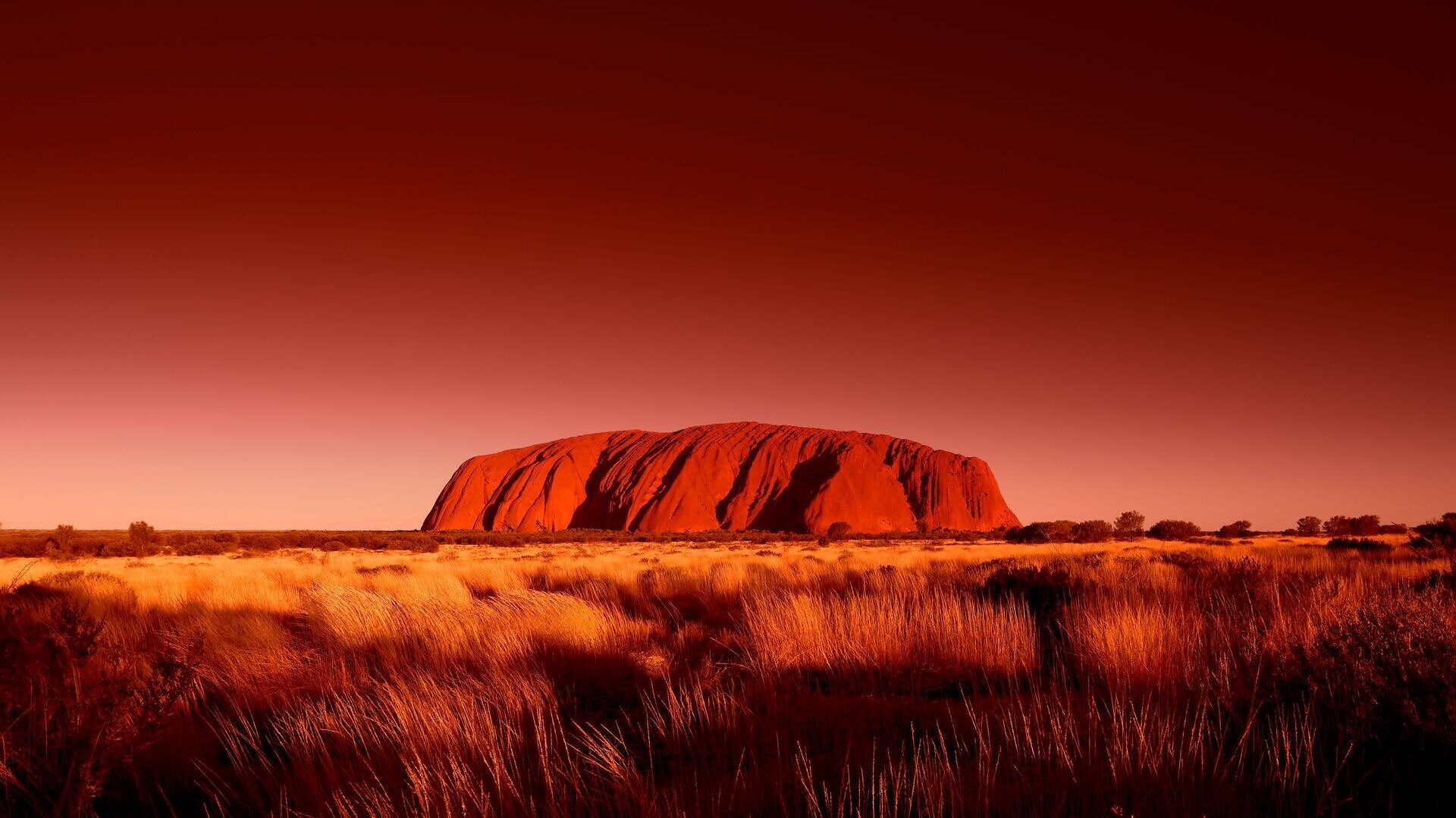

Uluru is a giant heap of sandstone smack dab in the middle of Australia. You’ve likely seen sandstone before, but none as absolutely unfathomable as Ayers Rock. This sacred sandstone monolith is one of the largest of its kind, stretching 348 meters into the sky. It’s no spring chicken, either; Uluru has circled the sun a whopping 550 million times — at least! Called the heart of the Red Center and a spiritual site for the Aboriginal peoples, the Anagu, a guided walk or camel ride to Uluru is a reverent experience as much as an adventurous one.
See Uluru on: Australian Highlights
2. The Fairy Chimneys, Cappadocia, Türkiye


Take a hot air balloon ride over Cappadocia and you’ll be convinced that there’s something fantastical living in Türkiye’s Fairy Chimneys. These rocky pillars are cone shaped, created by volcanic activity around 5 million years ago (give or take a few million). Ash rained down on the area, the dried rock was covered by basalt, and the long process of erosion formed these mushroom-like structures.
Unlike other weird rock formations like Uluru that are sacred and rather untouched, humans used these Fairy Chimneys as homes, churches, and more. While the majority are found in Goreme National Park, you can see them throughout the Central Anatolia region. A hot air balloon ride is a popular way to view them, though it’s equally awe-inspiring to stand before them.
Explore Cappadocia on: Best of Turkey
3. Giant’s Causeway, Northern Ireland
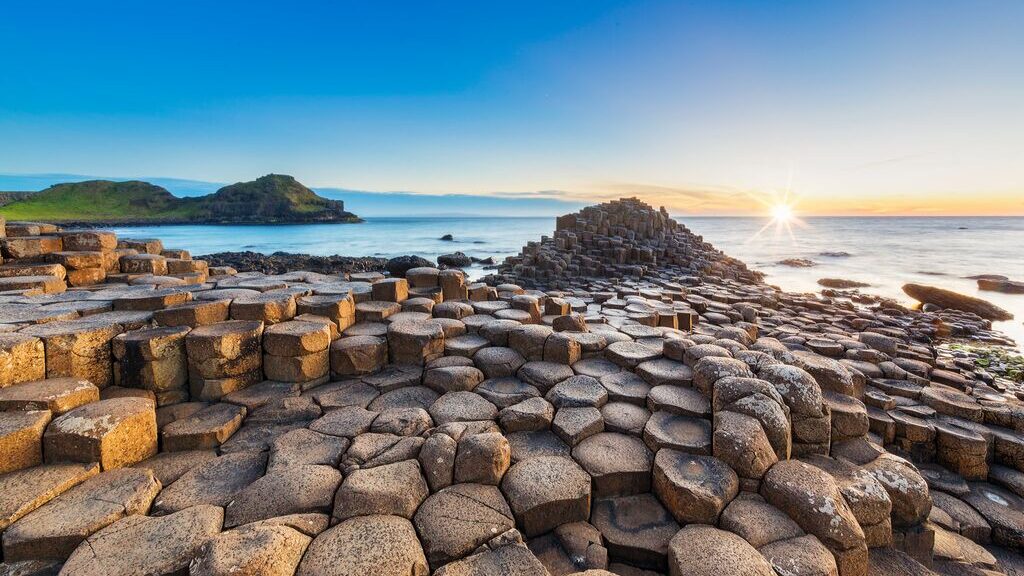

Take a drive through County Antrim in Northern Ireland and there’s no shortage of serene natural sights. And Giant’s Causeway may be the most spectacular of them all. These 40,000 or so basalt columns are one of the most popular attractions this side of the UK. Hexagonal in shape and staggered side-by-side, the Giant’s Causeway is a rock formation resulting from volcanic fissures nearly 60 million years ago.
But we prefer the folklore version of its origin: Finn McCool, an Irish Giant, built this causeway to reach his rival in Scotland across the Irish Sea. Benandonner, the kilt-wearing giant, ripped the causeway apart which is why only the base of it in Northern Ireland is still intact.
Spend a day at the Giant’s Causeway on: Amazing Ireland
4. The Beehive State’s otherworldly red rocks, Utah, United States
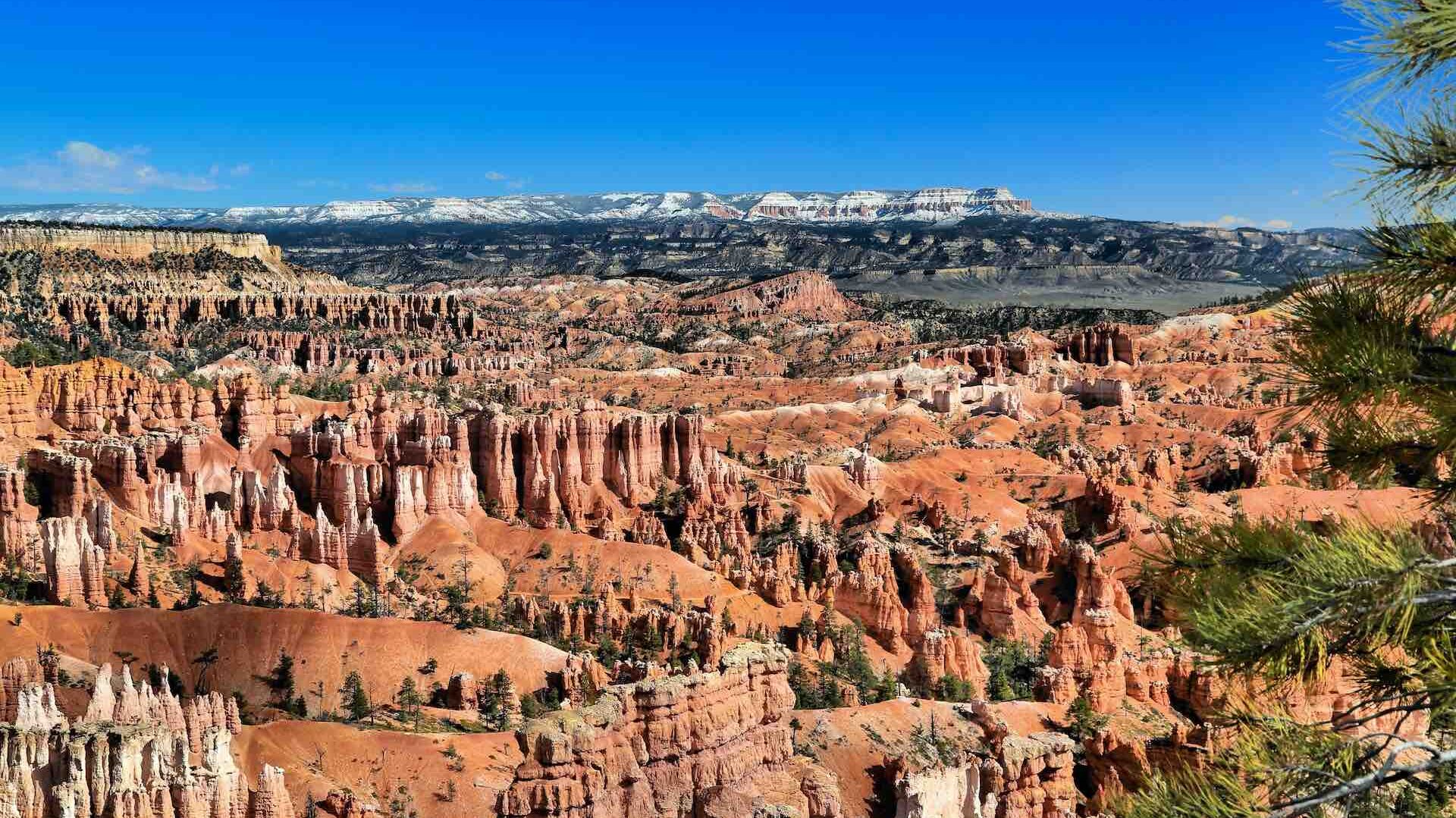

When it comes to choosing the best weird rock formations in Utah, the state really gives you a run for your money. By far two of our favorites within state lines are the sandstone rocks at Arches National Park and the crimson-colored hoodoos at Bryce Canyon National Park.
Arches has such a unique geology of balancing rocks, especially the literal Balanced Rock that looms over the park’s center. While Arches will have you staring up slack-jawed, Bryce Canyon will have you squinting to count all of the hoodoos filling the horizon. There are more hoodoos here than anywhere else in the world, which is a must-see for anyone who wants to examine how frost wedging creates such otherworldly geological formations.
Arches and Bryce Canyon aren’t the only national parks in Utah that rock. Join Trafalgar’s tour of Utah’s Mighty Five National Parks where you’ll spend 10 days visiting Zion National Park, Canyonlands National Park, and Capitol Reef National Park, as well as other sites in Colorado, Nevada, and Arizona.
5. The Richat Structure, Adrar Plateau, Mauritania
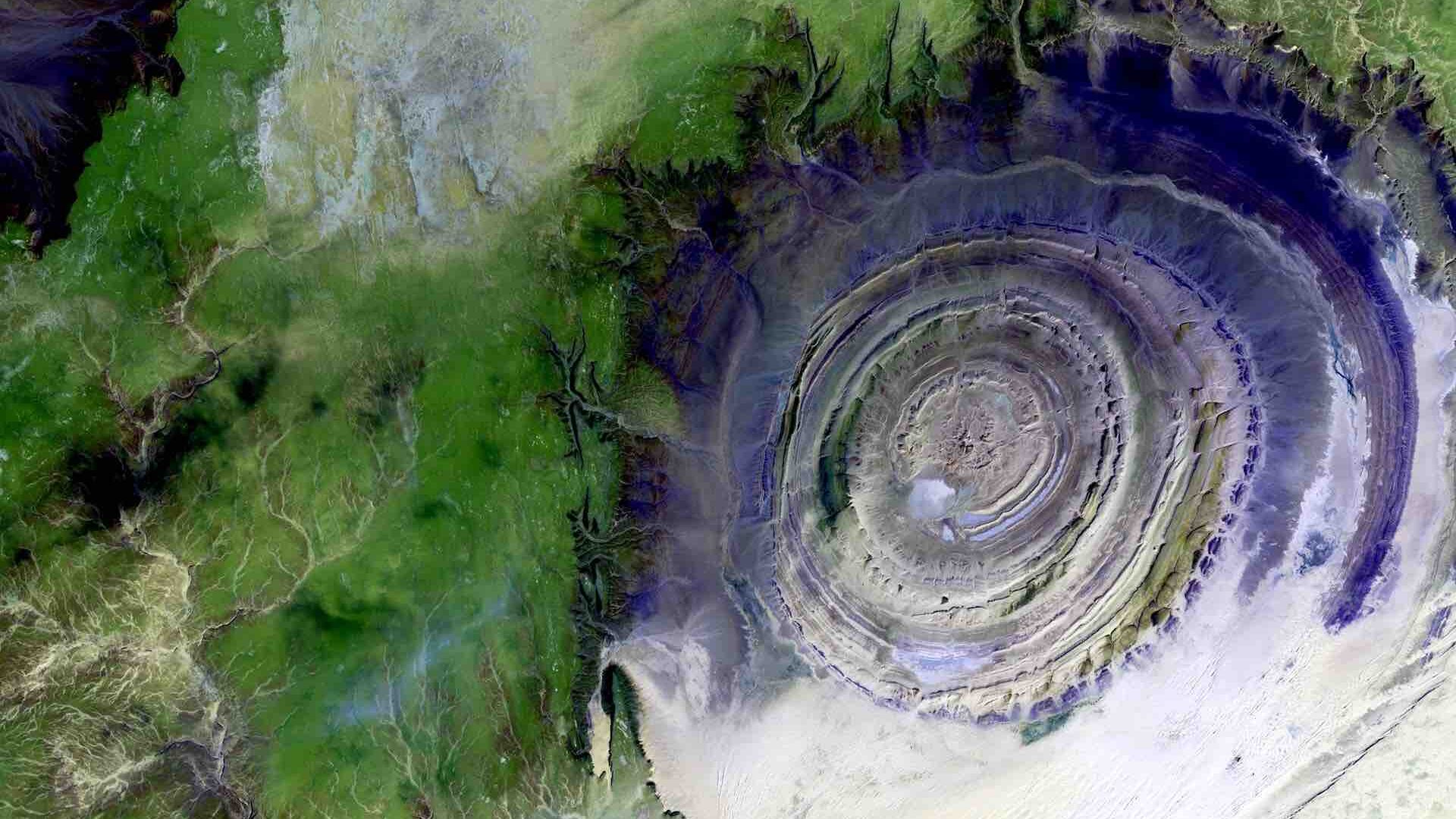

The Eye of the Sahara has certainly seen its share of world events. While it may look like an impact crater, peer a little closer and you’ll see that the Richat Structure is actually an eroded elliptical dome made of sedimentary rock that dates back an estimated 100 million years at its center.
In the most basic of explanations, this volcanic dome has been eroded layer by layer like an onion. Photos taken from the sky showcase this rock formation, but if you want to see it with your own two eyes, prepare for an uncomfortable trek. The Eye of the Sahara is indeed in the eponymous dry desert: the high heat and less than luxurious travel arrangements you’ll use make it a dangerous undertaking.
6. Swirling red rock formations of Arizona, United States


Arizona is famed for its mesmerizing and weird rock formations. There’s The Wave in Paria Canyon-Vermilion Cliffs Wilderness Area, with its undulating forms and striated patterns in red, orange and pink. It looks surreal, like a wave frozen in time. Access is limited to protect its delicate beauty, making it a prized destination for hikers and photographers.
You can also visit Antelope Canyon, the iconic slot canyon known for its rippling walls and light beams that shine down the narrow openings, creating a magical play of light on the orange sandstone walls. As this natural wonder is a spiritual site for the Navajo Nation, you can explore the canyon on guided tours only. It’s important to be respectful and avoid littering or using selfie sticks.
Explore the canyons of Arizona on: Scenic Parks Explorer
7. Moeraki Boulders, New Zealand
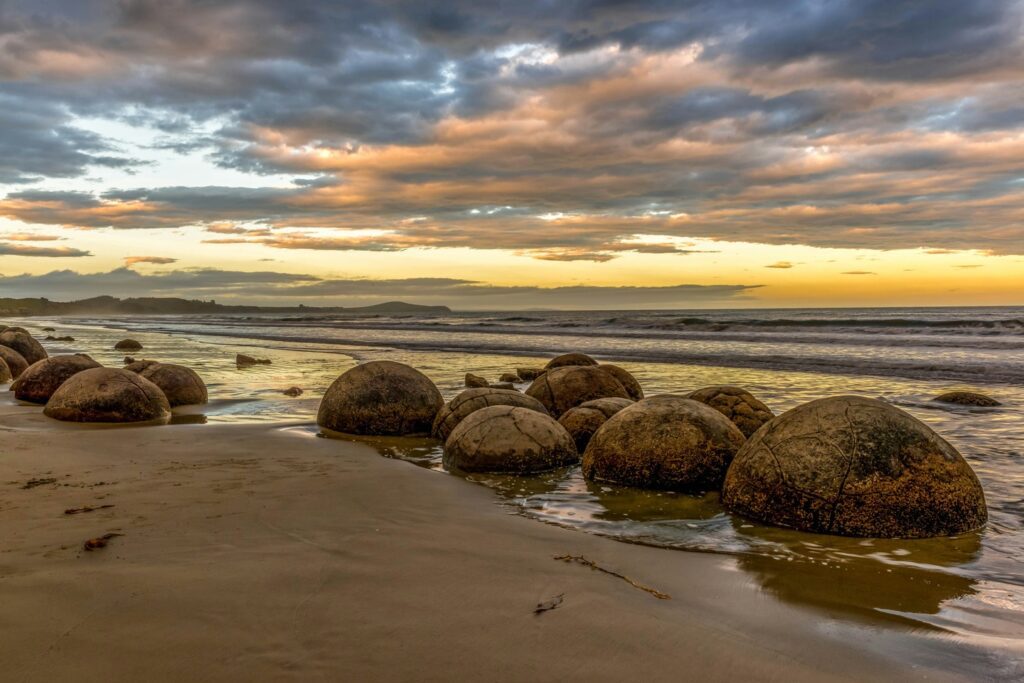

Scattered along Koekohe Beach on the Otago Coast of the South Island, the Moeraki Boulders are large, spherical stones that seem out of place on the sandy shores. These geological curiosities, formed from ancient sea sediments, have fascinated visitors for years with their nearly perfect shapes and mysterious origins.
Explore Otago and the South Island on: Southern Spectacular
8. Pamukkale, Türkiye


Pamukkale, meaning “cotton castle” in Turkish, is a natural site known for its hot springs and gleaming white terraces of carbonate minerals left by the flowing water. The dazzling white terraces against the blue of the water create a dreamy landscape that has been used as a natural spa since ancient times.
Visit Pamukkale on: Highlights of Turkey
9. Devils Tower, Wyoming, USA
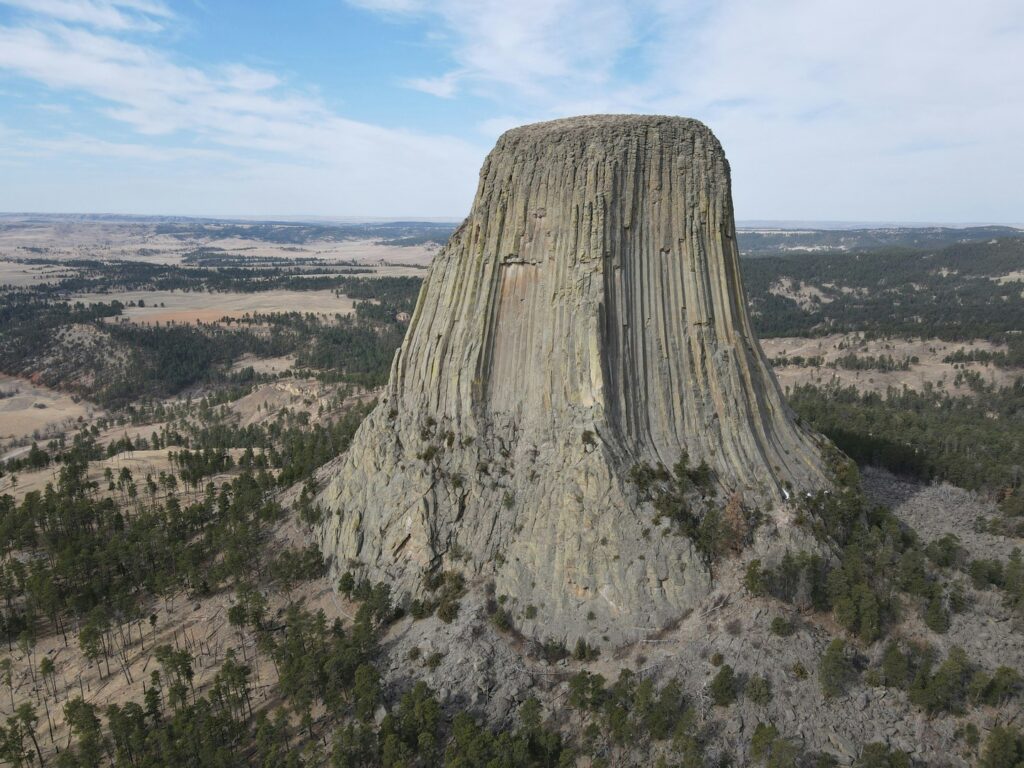

Devils Tower is a striking rock formation that rises dramatically from the rolling hills of northeastern Wyoming. Known as “Bear Lodge” by some Native American tribes, this monolithic butte is considered a sacred site. Geologists believe the tower was formed by the solidification of magma within the Earth’s crust, which then became exposed through erosion. Its sheer walls are marked by hundreds of vertical cracks, while the columns that make up Devils Tower are so perfectly hexagonal, they seem almost artificial, adding to the site’s mystery.
See Devils Tower on: National Park Wonders
10. Chocolate Hills, Bohol, Philippines
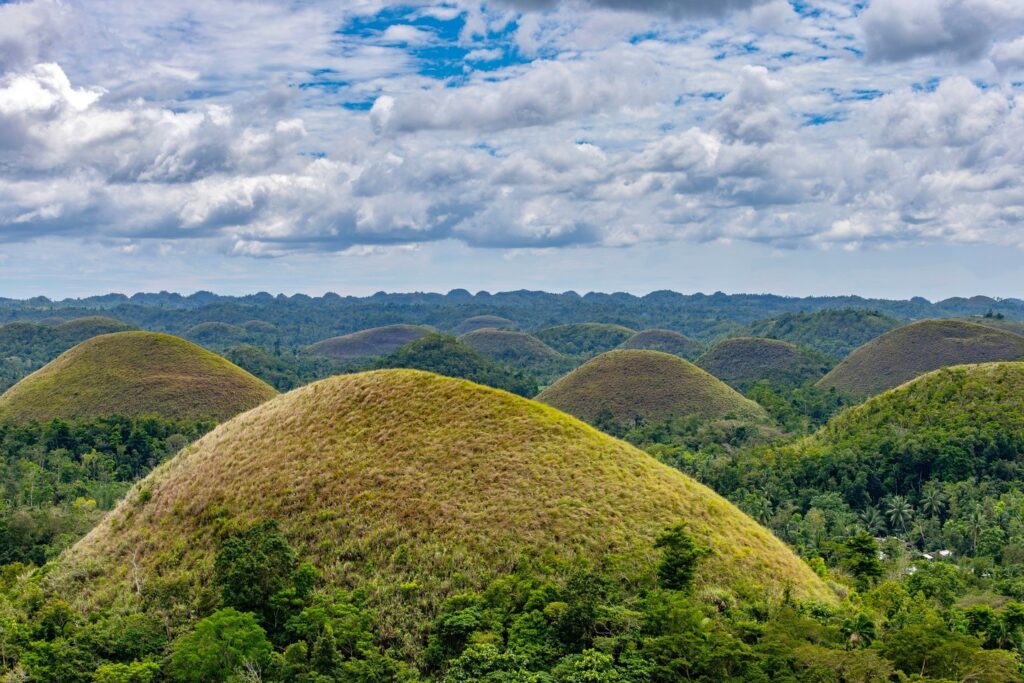

The Chocolate Hills are a truly weird rock formation, consisting of at least 1,260 hills. There may be as many as 1,776 hills spread over an enormous area of more than 50 square kilometers. These cone-shaped hills are made of limestone and covered in lush green vegetation during the rainy season. They turn brown in the dry season, resembling rows of chocolate kisses.
11. The surreal rock formations of Western Australia


The state of Western Australia is another region known for its bizarre rock formations. Head to Nambung National Park to see the Pinnacles, where hundreds of otherworldly limestone pillars rise from the yellow sands. These rocks have formed over millions of years as the sea receded and left deposits of seashells. Over time, wind and water erosion revealed the pillars we see today. The Pinnacles are a magnificent sight at sunrise or sunset when the light transforms the desert into a dramatic scene.
Travel a few hours south and you can also see the iconic Wave Rock. This giant rock is around 15 meters high and 110 meters long, formed by erosion over millions of years. The rock’s shape is strikingly similar to a breaking ocean wave, complete with fascinating bands of color.
Visit Australia on: Contrasts of Australia
12. Stone Forest, Yunnan, China


The Stone Forest or ‘Shilin’ in China’s Yunnan Province is another spectacular example of what natural forces can achieve over millions of years. This set of limestone formations resembles petrified trees, creating the illusion of a forest made of stone. Spread over an area of more than 300 square kilometers, the Stone Forest is part of a larger karst landscape. Visitors can explore a maze of towering peaks, deep valleys, and subterranean rivers, all of stone. This remarkable landscape has been steeped in local legends since the Ming Dynasty, making it a cultural treasure as well as a natural wonder.
Explore China on: Best of China with Yangtze Cruise
Seen any other weird rock formations on your travels you think deserve a mention? Let us know in the comments